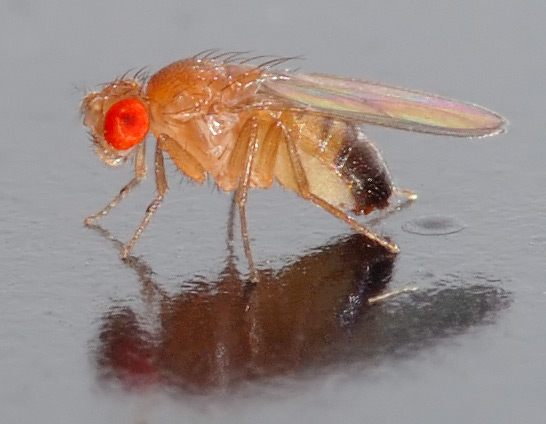Researchers from Caltech, the California Institute of Technology, have made a step forward in understanding how aggression may be hardwired into the genes, at least for fruit flies.
 This is research from Professor David Anderson and his colleagues, writing in the journal Nature this week. They've found a chemical pheromone that controls aggression in flies, and have also pinpointed the nerve cells in their antennae that detect the pheromones and send signals to the brain, telling it to kick off.
This is research from Professor David Anderson and his colleagues, writing in the journal Nature this week. They've found a chemical pheromone that controls aggression in flies, and have also pinpointed the nerve cells in their antennae that detect the pheromones and send signals to the brain, telling it to kick off.
We've known for a while that insects can respond aggressively to certain chemicals, or pheromones, when they're presented with artificial versions of them. But we don't know how much they use these pheromones normally to control their aggression. To prove it, the scientists had to track down the exact receptors in insect nerve cells that receive the pheromone signals - something that could only be done using fruit flies, as scientists have done a lot of research into their nervous system.
The researchers discovered that a chemical called 11-cis-vaccenylacetate, or cVA for short, can make pairs of male flies get aggressive, rearing up on their hind legs and hitting each other with their forelegs. And when they put pairs of male flies near a mesh cage containing other males that were releasing the chemical, they also became aggressive. But when the researchers silenced the nerve cells that respond to cVA, the flies no longer showed the aggressive behaviour.
Male fruit flies gather on food, because it gives them opportunities to mate with passing female flies. Normally they all get along OK, but if there are too many male flies, then this might interfere with feeding and mating.
The researchers took male flies that had been genetically manipulated to have hyper-sensitive nerve cells that detect cVA. They found that when these flies gathered on food, they fought each other until there was just one victor left. But when they tested unmodified flies, they just gathered together happily.
The researchers thinks that when the population of male flies gets high enough, the levels of cVA that they produce rises. This makes the flies aggressive and they fight, driving away some of them. As the flies fly off, the concentration of cVA drops again, and the flies calm down - and this cycle keeps repeating.
At the moment, these experiments have just been done in the lab, but the team thinks that it should be possible to reproduce them in the wild. And it would be very interesting to find out if the same kind of thing is at work in humans. Researchers have found aggressive pheromones in mice, so it's possible that we may also have them.









Comments
Add a comment